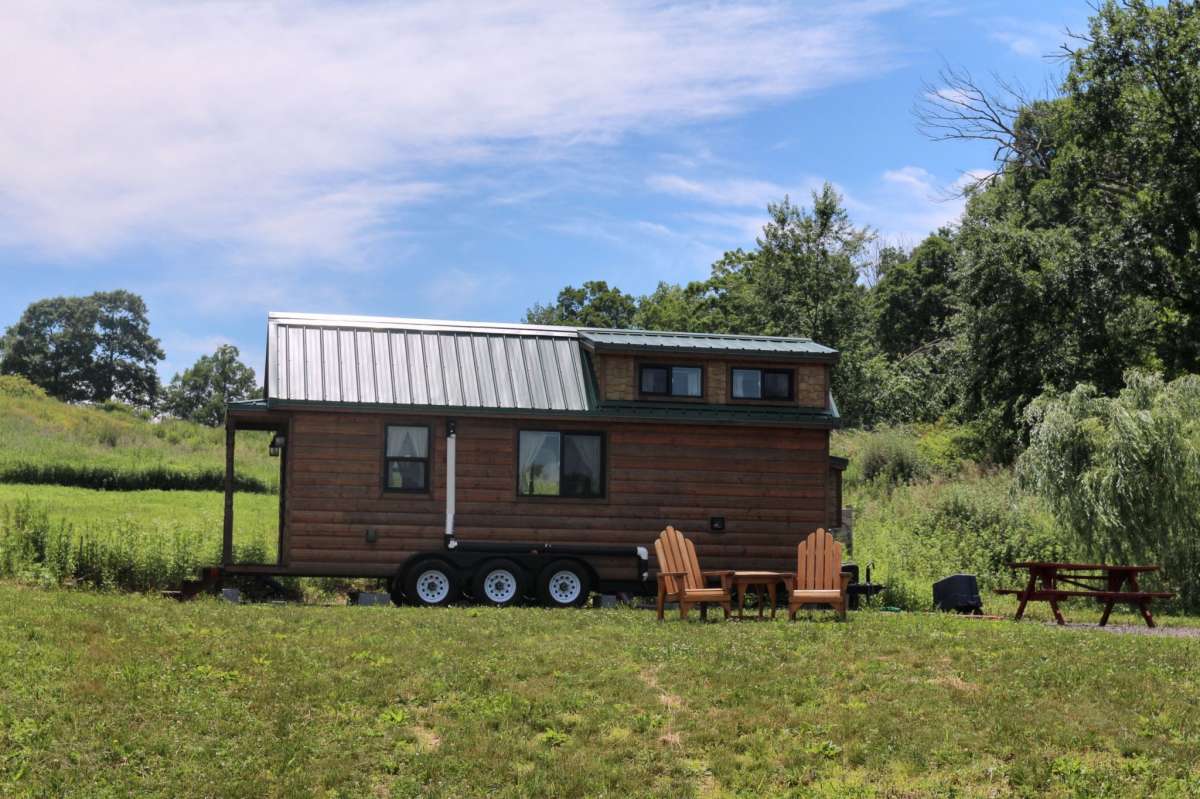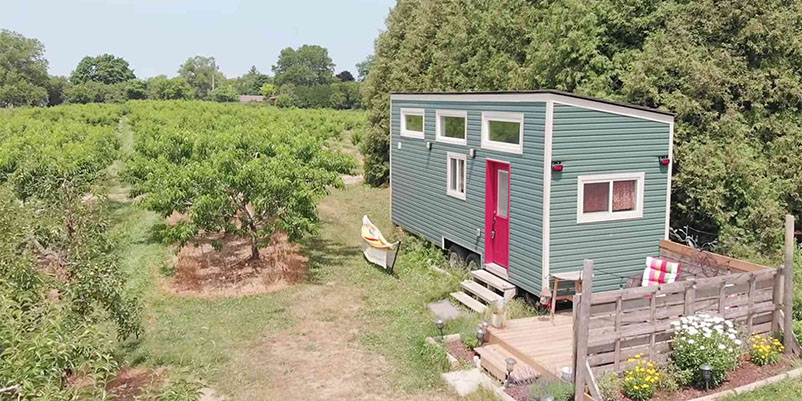In the San Juan Islands it is extremely difficult to expand the labor pool in any industry without affordable housing.
||| FROM MARCY MONTGOMERY for SAN JUAN MAKERS GUILD |||
San Juan County has a strong agricultural heritage and a growing appreciation of the significance of local food and regenerative agriculture practices. One of the greatest barriers to increasing local food self-sufficiency in the islands is the lack of housing, which in turn directly impacts the availability of an agricultural and food system work force. To address this barrier, funding for a new Housing Study has been secured and the Request for Proposals
(RFP) is now open.
Consultants interested in submitting a proposal can contact sjmakersguild@gmail.com to request a copy of the RFP. Proposals are due Nov. 19.
The housing study is designed as a proactive step that supports active county wide efforts to increase locally grown food and agricultural products while also addressing the housing needs of wider food system employers including grocers and restaurants. The goal of the study is threefold: 1) to measure workforce housing needs and barriers, 2) to quantify economic multiplier impacts and community wellbeing indicators, and 3) to identify potential affordable housing solutions.

Nationally and locally, the pandemic has starkly highlighted vulnerable gaps in the inter-dependent food system with labor shortages impacting food production, distribution and public safety. In the San Juan Islands it is extremely difficult to expand the labor pool in any industry without affordable housing. According to the 2021 Agriculture Viability Report conducted by Washington State University’s Social and Economic Sciences Research Center, farmworker housing was reported as an extreme challenge by 25% of respondents – the topmost of the fifteen challenges addressed in the report. This lack of available and affordable housing is a challenge impacting all food system partners – farmers, food producers, grocers, retailers, food banks, restaurants, cafes, chefs and caterers.
San Juan residents’ efforts to solve local housing needs and strengthen our food access network faces the added challenge of well-known real estate pressures. Vacation home conversions are eroding the long-term rental pool and the lack of employee housing needed to support food production and food access directly impacts local services for island residents.
Also hard hit is our tourism industry that infuses over 25% of the local economy with visitor revenues yet a recent street survey found island guests struggling to find an open restaurant during peak weekend demand. Restaurants in turn report they have had to limit service hours due to a lack of labor and directly attribute that to a lack of housing. Clearly, workforce housing is a key infrastructure need to ensure a stable quality of life for residents and to support our local economy.

The new Housing Study Request for Proposals period (due November 19) has been opened with the goal of hiring a rural food system housing consultant to research and prepare a Housing Market Study.
Working together, The San Juan Islands Agricultural Guild, the San Juan Islands Food System Team, and the San Juan Makers Guild, with advisors from OPAL Community Land Trust and the Lopez Community Land Trust are leveraging newly awarded USDA funding to invite, review and select the Study consultant.
Thanks to support from the Northwest Agriculture Business Center, the contract funding is available and the final report will be shared with the community by the end of 2022. Consultants interested in submitting a proposal can contact sjmakersguild@gmail.com to request a copy of the RFP.
**If you are reading theOrcasonian for free, thank your fellow islanders. If you would like to support theOrcasonian CLICK HERE to set your modestly-priced, voluntary subscription. Otherwise, no worries; we’re happy to share with you.**









“The new Housing Study Request for Proposals period (due November 19) has been opened with the goal of hiring a rural food system housing consultant to research and prepare a Housing Market Study.”
Why does it seem that there is always money for hiring consultants to tell us what we already know, but never any money for actually doing anything about it? The underlying problem with agricultural worker housing is zoning and building code restrictions that make it economically impossible for farmers and restauranteurs to legally provide housing for employees.
You want a down and dirty solution to low income housing? (And don’t kid yourself, being a farm laborer is and always has been a physically demanding, low paid job) Change the zoning to allow for a trailer park on Orcas. And I’m not talking about over-weight, over-priced ‘tiny homes’. I’m talking about travel trailers. They are moveable with normal size vehicles, they are (reasonably) affordable and newer models are uniformly better built than amateur built ‘tiny homes’.
Now, cue the hue and cry for my head that I have the temerity to suggest that anyone should be expected to live in a travel trailer with heat, lights, and running water while spending their days picking arugula for your locally grown salad!
Ken the issue is more complicated than just removing the zoning contingencies even though I do share your sentiments that zoning is the biggest issue in San Juan County. The problem is the cost of year round utilities for a temporary summer use as well. If a wealthy person builds a 7,000 sq. ft. house with 10 bathrooms and 10 bedrooms they can purchase 1-water, 1-sewer membership, and 1-electric hook up, and have all their friends visit and stay in the house in the summers and only pay a single monthly utility bill.
But if you had a 10-space trailer park with 10-small trailers (or tiny homes or even 10 unit apartment building) you would need 10-water memberships (approx: $150,000) & 10-sewer memberships (approx $150,000) and something worked out with the electric company for 10-trailer disconnects. This is prohibitively expensive for the up front utility capital costs, but then you also have ongoing monthly billings for water, sewer & electric even if you only use the trailers for 3-months of the summer season, or barely use it, you still need to pay for 12-months a year. All of the utility companies charge monthly for inactive use and thus 3-months of summer use becomes 12-months of ongoing billings charges which gets expensive for affordable, temporary or lite use housing.
The issue is zoning, yes, it is the county’s onerous, convoluted, and often poorly drafted policies and the general overregulation of building in San Juan County. The County is usually reacting from “a tail wagging the dog scenario,” where the County jumps to appease a small but loud “bark” of self-important neighbors and committees. But it is also the utility companies charging 12-months a year for little usage, and treating large houses the same as a studio apartment, or a single travel trailer. It just gets too expensive to live here no matter what unless the zoning is changed, the parking requirements are changed, the utility companies have a provision for “transient summer use,” or bill more proportionally towards the actual usage of tiny homes, trailers, & studios. At this point “small temporary housing” is charged the same as “big year-round housing.”
INMHO It goes much deeper than just zoning in the San Juans but includes the capital costs for utilities for small affordable units and the ongoing monthly billing. I think it is time for SJC to amend its zoning to allow a more lenient permitting of tiny homes, trailers, and temporary summer use while the utility companies follow suit and have provisions for limited use, single use, and summer use so that billing is proportional to its actual use.
In addition to Ken’s comments, without clawing back the aggressively restrictive land use codes set upon us by the GMA, we will constantly be fighting against false barriers.
Urban Growth controls in places that lack anything remotely resembling “urban” have a direct and negative effect on those at the base of our economic structure. If we are an agriculturally dependent county and housing is the barrier to viable agricultural sustainability, then start by eliminating urban driven land use thinkkng.
“Local food self-sufficiency in the islands”
“Regenerative agriculture practices”
Fine goals.
Some questions:
– How much of the County’s food sources are currently produced in-county?
– What is the dollar value of our current agricultural industry in the County?
– How much could be produced?
– How much could be produced in a *sustainable* fashion?
– Does “sustainable” and “regenerative” include bringing in imports of fertilizer, pesticides, and fuel from the mainland, and engaging in practices that are non-sustainable elsewhere so we can be sustainable here in the county?
Sean–I’m puzzled about the electricity charges. What is billed beyond actual use? Is there a base service charge? How is a multi-family rental building treated for purposes of electricity billing?
I’m assuming that the comment about water and sewer hookups applies only to the UGA?
All these comments show why a study like this is vital to look at these issues and identify what systems need to change. Congratulations on putting this together
and seeking a consultant!
What happened with the County’s study a few years ago?